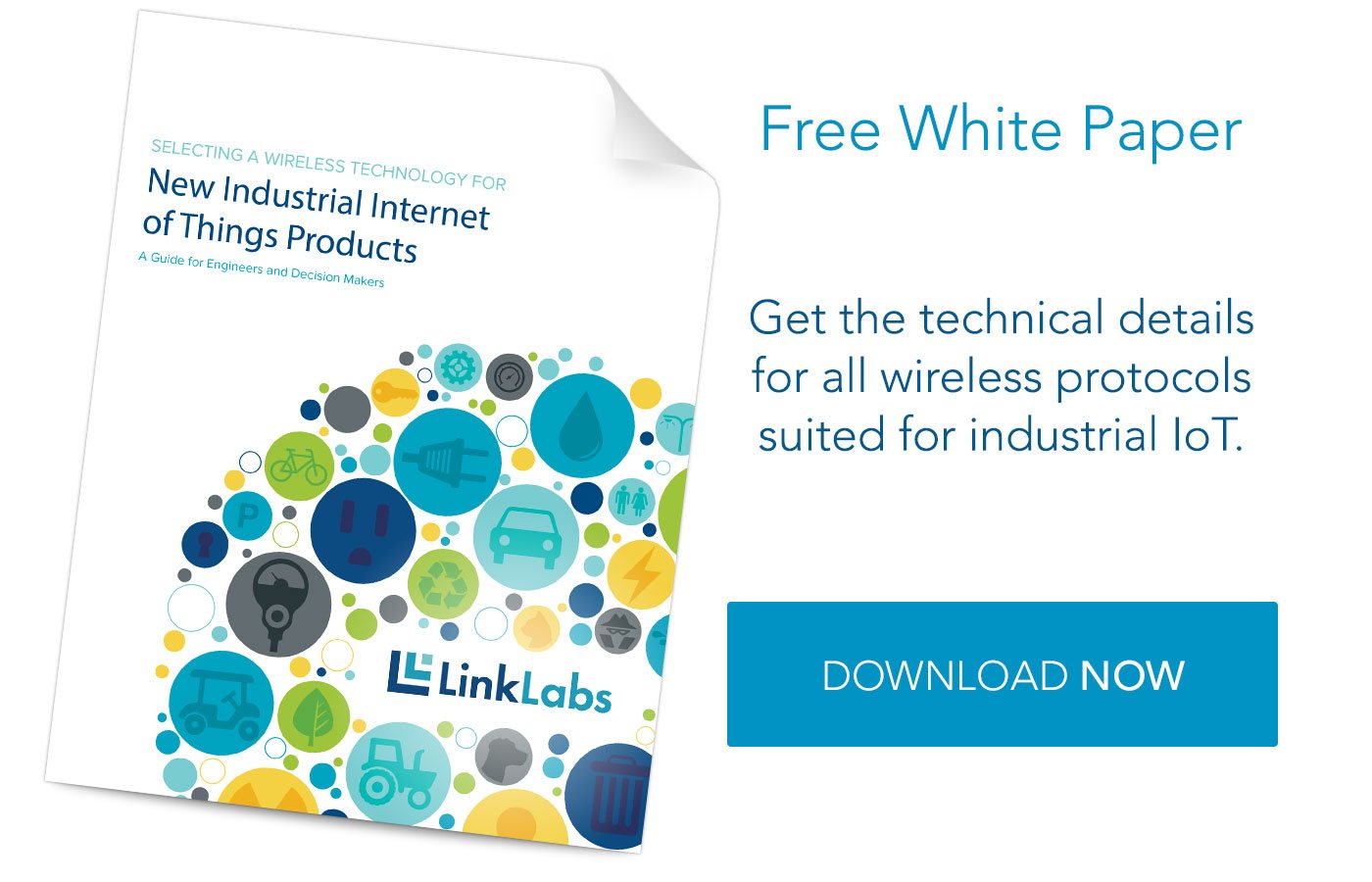Preventive maintenance is a regularly performed equipment checkup that is typically based on running time or routine. For example, an airline may perform a “100-hour teardown” of a jet engine to check for problems after it has clocked 100 hours of run time.
Predictive maintenance—or PdM—is used to forecast potential issues before maintenance is scheduled and amass data from the system for companies (and OEMs) to use. This continuous monitoring and data acquisition has been done for decades using wired bus protocols (like profibus and modbus), but getting data out of the factory and into hands of a third party for PdM reasons? That’s new.
Want to find the best wireless technology for your M2M application?
Below, we’ll examine what predictive maintenance looks like today, the challenges that accompany it, and what we see that may change predictive maintenance over the next few years.
Challenges & Solutions Of Predictive Maintenance Today
Easier Data Harvesting using LPWA Networks
One of the biggest challenges of predictive maintenance programs is getting data out of the system. This data isn’t just useful to the plant owner—it is also useful for the third party OEMs who built the machinery. And without the ability to continually monitor data flows, it’s incredibly difficult to model and assess the machine for future PdM. Sensor networks like Symphony Link offer the ability to get data out of third-party enterprises in a cost-effective manner.
The data the PdM system can harvest is typically organized into two distinct categories:
- Internally generated data. In other words, the system itself gathers data the machine is generating, like battery levels, fault codes, performance, etc.
- Externally observable data. This includes things like infrared heat, acoustic signatures, vibration levels, sound levels, oil viscosity measurements, current consumption, and other nondisruptive testing monitoring devices.
If outfitted correctly, predictive maintenance systems can latch onto existing products and instruments and begin harvesting data flow immediately without disrupting uptime.
Selling Uptime As A Service
Predictive maintenance also allows a whole new business model to be created for OEMs around selling uptime of a machine as a service instead of simply selling the product. For instance, instead of advertising for a target market to simply purchase their airplane engine, an OEM could have their customers pay them for every hour the engine is used. In exchange, the OEM can take care of all service and maintenance required.
Of course, this isn’t possible for every industry. It’s far easier to do in settings where the OEM’s field service force can access the company, factory, or plant and in scenarios when the broken equipment can be swapped out easily.
Cost Savings
Instead of flying someone out to fix something in a piece of machinery you haven’t been able to identify, predictive maintenance data systems allow you to identify precisely what has broken and what needs to be done to get the equipment serviceable once more. This is a clear cost savings.
Better Feedback Loop
A solid PdM system provides you with design feedback that has never been possible before. For example, if you do a small release of a new product you’ve been working on, you can immediately examine what needs to change and integrate those changes right away. This drastically shortens the product development lifecycle for the full release of the product. (It also aids in understanding any root causes of failure in the design cycle.)
What Will Predictive Maintenance Look Like In 2017 (& Beyond)?
Standardization Of Sensor Interfaces
One thing that will be very important for the future of industrial automation and for the whole predictive maintenance sensing ecosystem is the standardization of sensor interfaces. This eventual standardization will create much less friction for OEMs and their customers. Of course, there are companies who are trying to push standardization, but there’s very little incentive for companies to do so because they are more interested in creating proprietary technology. Therefore, standardization will need to be driven more by the industry than by technology providers.
That being said, you don’t need to wait to integrate PdM systems until they become standardized. This could be years away from happening and will continue to evolve even once there is a standard in place. The best approach is to take small steps by piloting a PdM system and then learn how different use cases can be solved with the technology.
Introduction Of LTE-M & NB-IoT Technology
Additionally, it will also be interesting to see how cellular technologies like LTE-M and NB-IoT play into the predictive maintenance space. These cellular technologies allow for direct-from-sensor data acquisition at a very low cost and power point. This creates the ability for inexpensive battery-powered sensors to connect directly to the cellular network. If you wanted to do this today, you would have to put a cellular data acquisition hub (for upwards of $1,200) on whatever you wanted to monitor, and could expect to pay between $10 and $30 per month for that data flow.
Wireless Network Consideration
Unlike some IoT solutions, the value for predictive maintenance solutions isn’t added from the data transport method. Rather, the value is created from the sensor and application layer. As you’re examining which wired or wireless system to transport the data, keep in mind that they’ll be equivalent in many ways. In other words, the technology used to solve the predictive maintenance problem is less interesting than the end-to-end solution it creates.
The only considerations you will want to keep in mind are cost differences and deployment considerations. In other words, keep in mind that a nuclear power plant isn’t likely to have a guest WiFi network you can piggyback on!
If you want to learn more about these benefits and drawbacks, check out the free white paper below.





